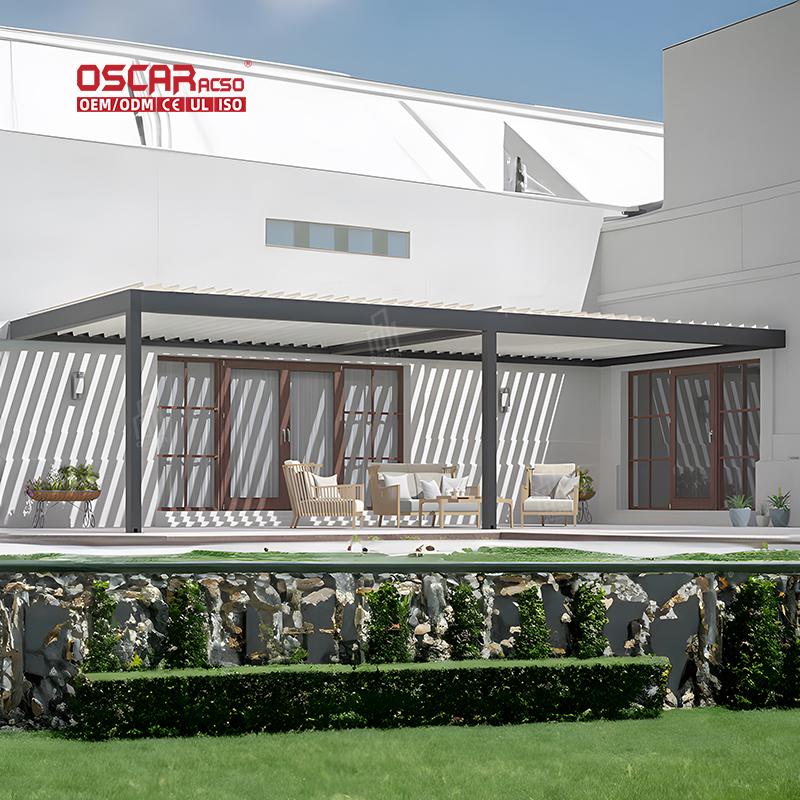Pergola Origins Unearthed, Tracing Its Invention Through Ages
🌿 The question \"when were pergolas invented?\" might seem simple, but the answer is a fascinating journey through time. U...
🌿 The question “when were pergolas invented?” might seem simple, but the answer is a fascinating journey through time. Unlike a single eureka moment, the pergola’s evolution is a tapestry woven from ancient practicality, artistic expression, and timeless human desire to blend architecture with nature.
🏛️ Ancient Beginnings and the Name’s Tale
The core idea of the pergola—a supported open framework—is ancient. While pinpointing the very firstone is tricky, its conceptual roots run deep.
The word ”pergola” itself is Italian, believed to derive from the Latin “pergula,”meaning a projecting eave or a arbor. Interestingly, the Italian town of Pergola, a member of “The Most Beautiful Villages of Italy,” offers a clue. One theory suggests the town’s name originated from a pergolato(a pergola-like structure) that adorned the entrance to the ancient church of Santa Maria della Pergola. This hints at how ingrained these structures were in local culture and architecture.
A captivating, though indirect, connection lies in the ancient city of Pergamon (modern-day Bergama, Turkey). In the 2nd century BC, it became famous for producing pergamen, a refined parchment made from specially treated animal skins. This innovation emerged from a rivalry with the Library of Alexandria, which allegedly halted papyrus exports to Pergamon. While this story is about writing material, it highlights the innovative spirit associated with the name “Pergamon,” which is linguistically linked to “pergola.” This innovation in creating durable, new materials from available resources mirrors the pergola’s function: creating comfortable, shaded spaces using natural elements.
🏺 The Roman Refinement
It was the Romans who truly refined and popularized the pergola as a garden feature. They were masters of engineering and leisure, and the pergola perfectly served both purposes.
- •
Functional Elegance: Romans used pergolas to support climbing vines like grapes, vines, and roses. This provided shade in their courtyards and gardens and served a practical agricultural function.
- •
Architectural Extension: They became essential elements in villa gardens, creating shaded walkways between buildings, defining outdoor rooms, and providing a structure for plants to thrive, blending the built environment with the natural one.
Evidence of such structures can be inferred from ancient Roman gardens and villas, where outdoor living was cherished. The Roman talent for creating serene, green oases undoubtedly cemented the pergola’s place in architectural history.
🌍 Global Parallels and Eastern Traditions
While the ancient Romans are often credited with formalizing the pergola, the concept of creating shaded outdoor structures arose independently across cultures.
In China, during the Tang Dynasty (618-907 AD), people built sophisticated 凉棚 (liáng péng) or cool sheds/awning structures. These were often made with bamboo frames and mats to provide shade in courtyards. Descriptions from the time mention that wealthy families in Chang’an (the capital) would even host “cooling parties” under these structures. This practice shows a parallel development of using lightweight, non-solid overhead structures for shade and social gathering, much like the pergola.
🎨 Evolution Through the Ages
The pergola’s journey didn’t end with Rome. Its design and purpose evolved through subsequent eras.
- •
Medieval and Renaissance Gardens: In monastery gardens, pergolas retained their practical use for supporting plants. During the Renaissance, they were rediscovered as elements of beauty and symmetry, integral to the formal, geometric gardens of Italian villas.
- •
The Victorian Era: Pergolas gained immense popularity in Victorian gardens and public parks. They became symbols of romantic leisure, often adorned with ornate ironwork and lush climbing roses, emphasizing a connection to nature and picturesque beauty.
- •
Modern Interpretations: Today, pergolas are more popular than ever. Modern materials like powder-coated aluminum, vinyl, and composite lumber offer durability and low maintenance. Designs range from minimalist and contemporary to classic and traditional. They are no longer just for sprawling gardens; they adapt to urban balconies and small patios, proving their timeless versatility.
💡 Why the Pergola Remains Timeless
The pergola’s enduring appeal lies in its unique blend of form and function. It’s a structure that frames outdoor living space without enclosing it, creating a feeling of roominess while maintaining a connection to the open air. It supports lush, natural shading that changes with the seasons, unlike a static solid roof. Ultimately, it extends our living space and encourages us to enjoy the outdoors in comfort and style.
From ancient Roman vineyards to modern backyard retreats, the pergola’s story is one of adaptation and enduring appeal. It’s a testament to our lasting desire to create graceful, shaded havens in our personal landscapes. 🤗


